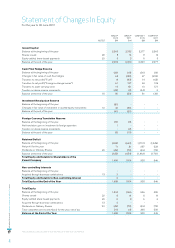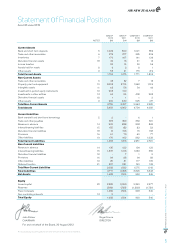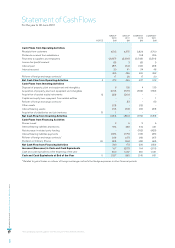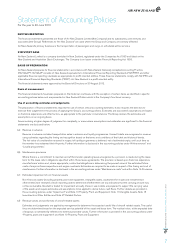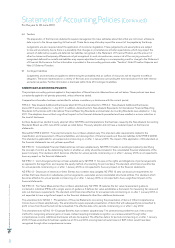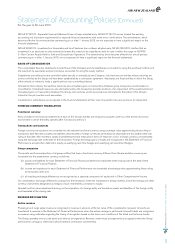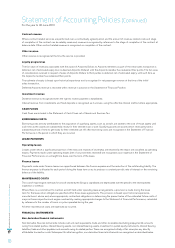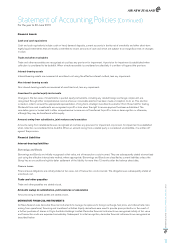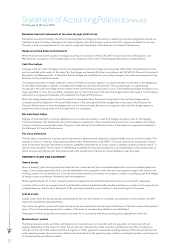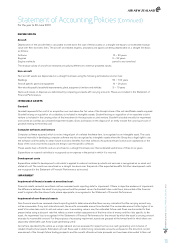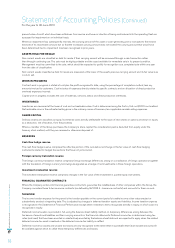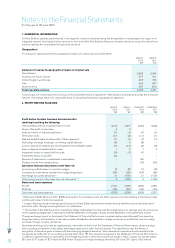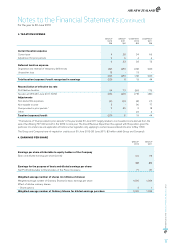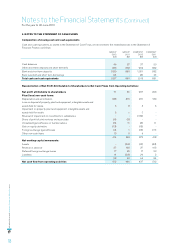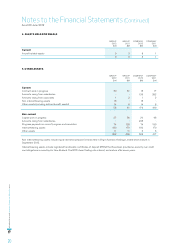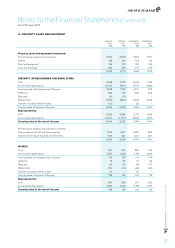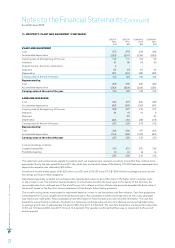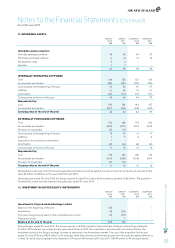Air New Zealand 2012 Annual Report Download - page 16
Download and view the complete annual report
Please find page 16 of the 2012 Air New Zealand annual report below. You can navigate through the pages in the report by either clicking on the pages listed below, or by using the keyword search tool below to find specific information within the annual report.
AIR NEW ZEALAND ANNUAL FINANCIAL RESULTS 2012
14
present value. Aircraft which have been withdrawn from service and have no intention of being reintroduced into the operating fleet are
assessed for impairment on an individual basis.
Where an impairment loss subsequently reverses, the carrying amount of the asset or cash-generating unit is increased to the revised
estimate of its recoverable amount, but so that the increased carrying amount does not exceed the carrying amount that would have
been determined had no impairment loss been recognised in prior years.
ASSETS HELD FOR RESALE
Non-current assets are classified as held for resale if their carrying amount will be recovered through a sale transaction rather
than through continuing use. The sale must be highly probable and the asset available for immediate sale in its present condition.
Management must be committed to the sale, which should be expected to qualify for recognition as a completed sale within one year
from the date of classification.
Non-current assets classified as held for resale are measured at the lower of the asset’s previous carrying amount and its fair value less
costs to sell.
WORK IN PROGRESS
Contract work in progress is stated at cost plus the profit recognised to date, using the percentage of completion method, less any
amounts invoiced to customers. Cost includes all expenses directly related to specific contracts and an allocation of direct production
overhead expenses incurred.
Capital work in progress includes the cost of materials, services, labour and direct production overheads.
INVENTORIES
Inventories are measured at the lower of cost and net realisable value. Cost is determined using the first-in, first-out (FIFO) cost method.
Net realisable value is the estimated selling price in the ordinary course of business, less applicable variable selling expenses.
SHARE CAPITAL
Ordinary shares are classified as equity. Incremental costs directly attributable to the issue of new shares or options are shown in equity
as a deduction, net of taxation, from the proceeds.
Where a member of the Group purchases the Company’s share capital, the consideration paid is deducted from equity under the
treasury stock method, until they are reissued or otherwise disposed of.
RESERVES
Cash flow hedge reserve
The cash flow hedge reserve comprises the effective portion of the cumulative net change in the fair value of cash flow hedging
instruments related to hedged transactions that have not yet occurred.
Foreign currency translation reserve
The foreign currency translation reserve comprises foreign exchange differences arising on consolidation of foreign operations together
with the translation of foreign currency borrowings designated as a hedge of net investments in those foreign operations.
Investment revaluation reserve
The investment revaluation reserve comprises changes in the fair value of the investment in quoted equity instruments.
FINANCIAL GUARANTEE CONTRACTS
Where the Company enters into financial guarantee contracts to guarantee the indebtedness of other companies within the Group, the
Company considers these to be insurance contracts (as defined by NZ IFRS 4 - Insurance contracts) and accounts for them as such.
TAXATION
The income taxation expense for the period is the taxation payable on the current period’s taxable income at tax rates enacted or
substantively enacted at reporting date. This is adjusted by changes in deferred taxation assets and liabilities. Income taxation expense
is recognised in the Statement of Financial Performance except where it relates to items recognised directly in equity, in which case it is
recognised in equity.
Deferred income taxation is provided in full, using the balance sheet liability method, on temporary differences arising between the
tax bases of assets and liabilities and their carrying amounts in the financial statements. Deferred income tax is determined using tax
rates (and laws) that have been enacted or substantively enacted by the balance sheet date and are expected to apply when the related
deferred income tax asset is realised or the deferred income tax liability is settled.
Deferred income tax assets and unused tax losses are only recognised to the extent that it is probable that future taxable amounts will
be available against which to utilise those temporary differences and losses.
Statement of Accounting Policies (Continued)
For the year to 30 June 2012


